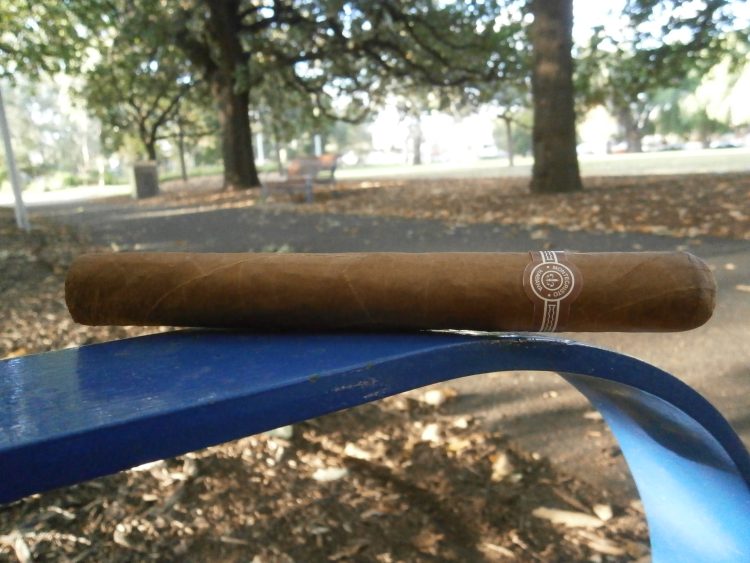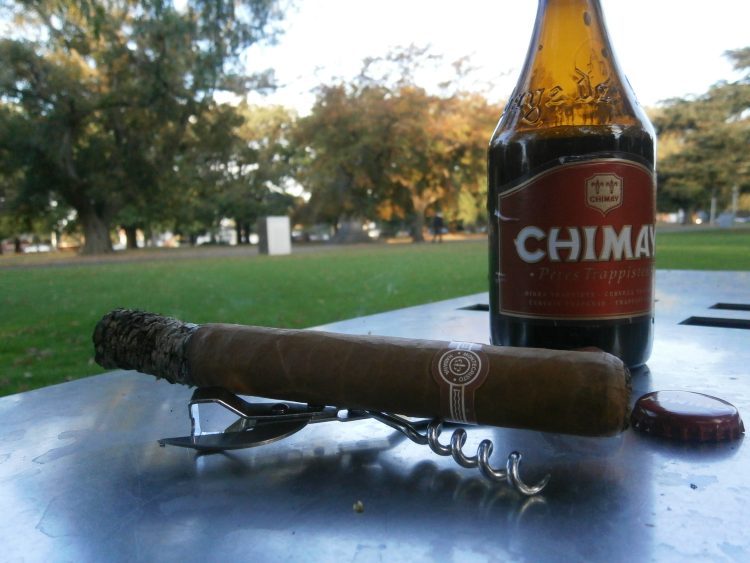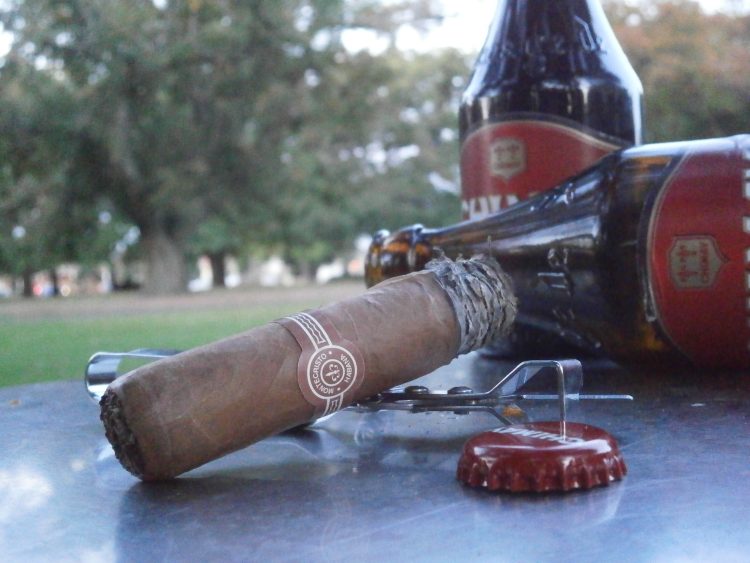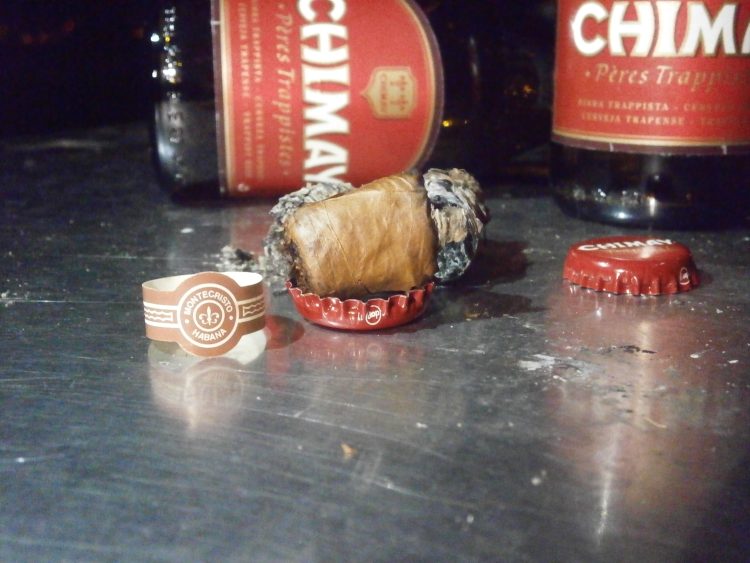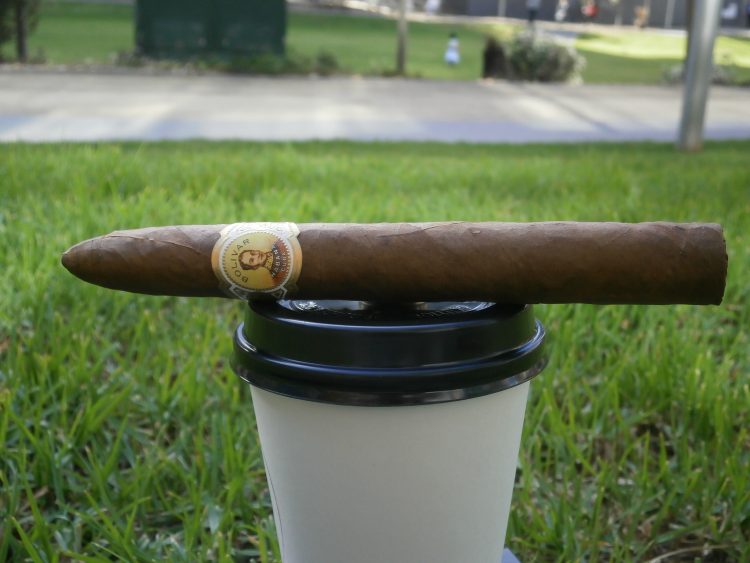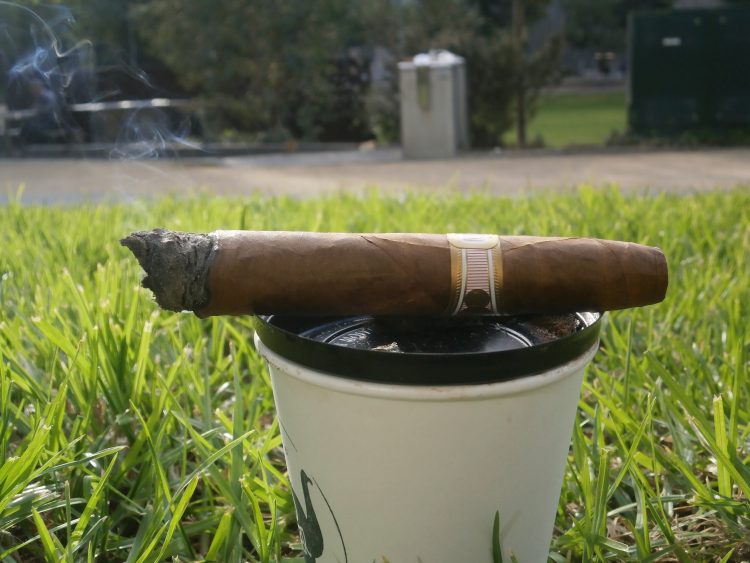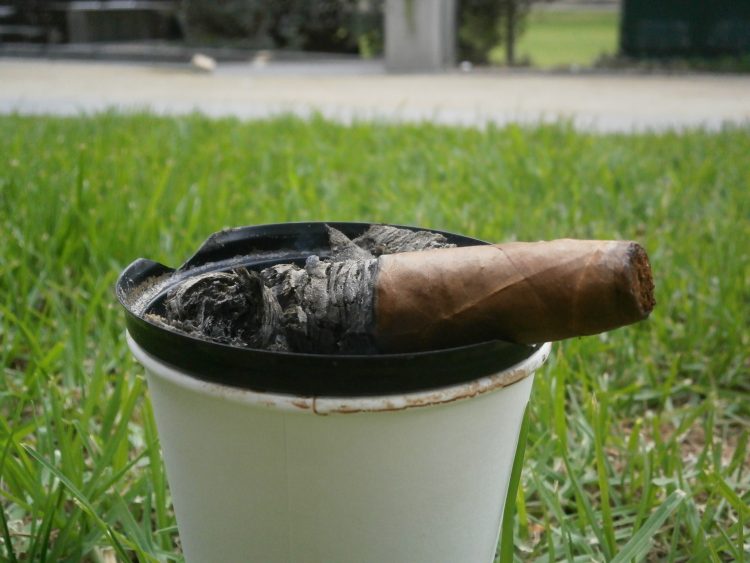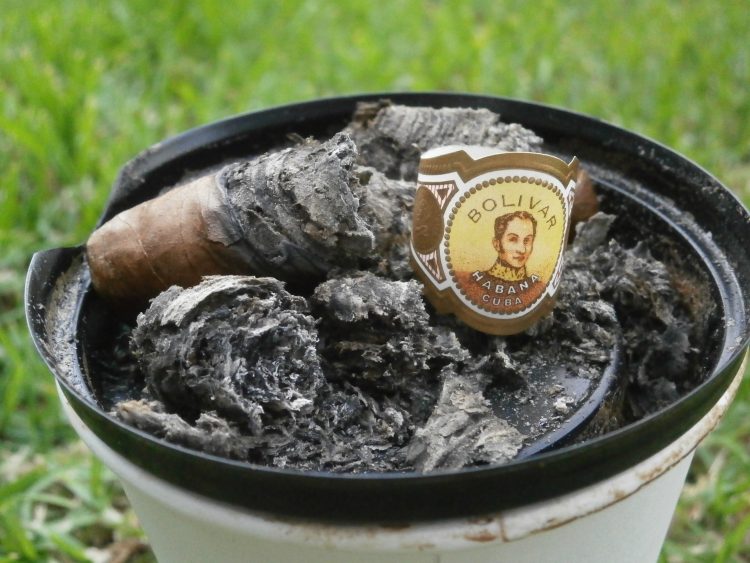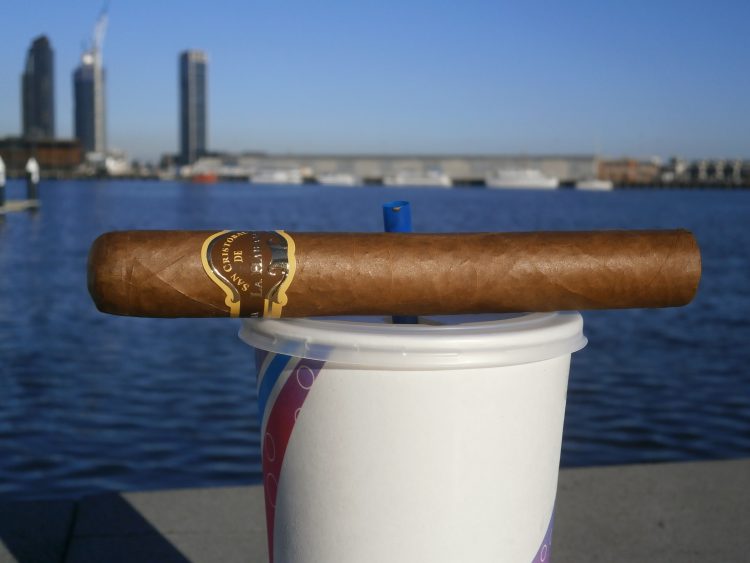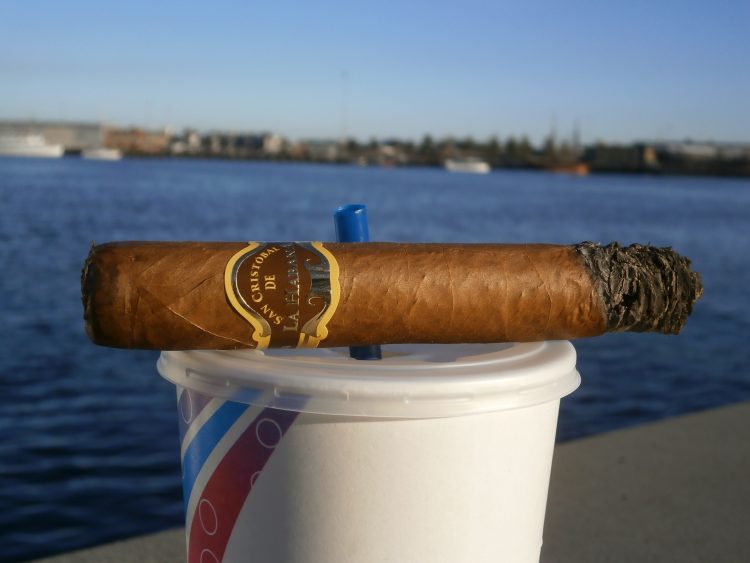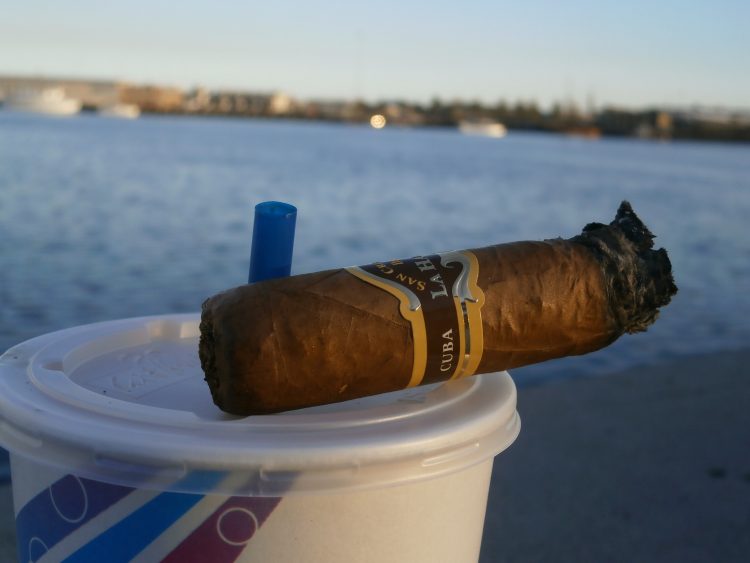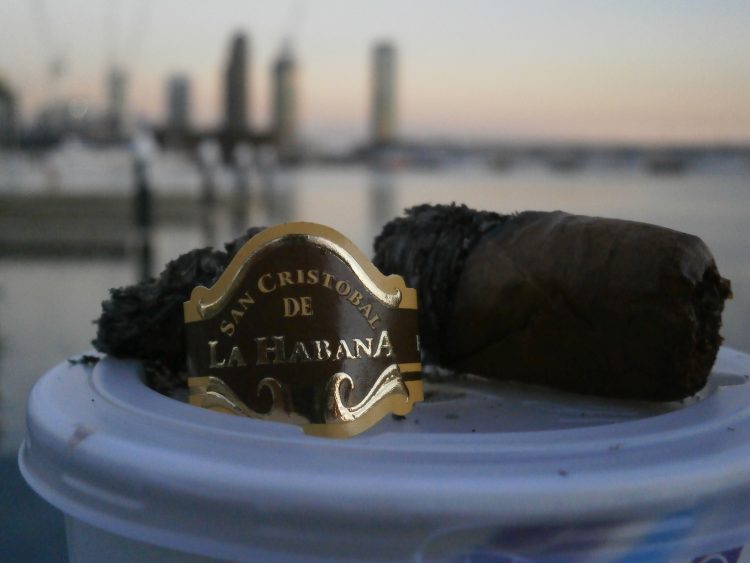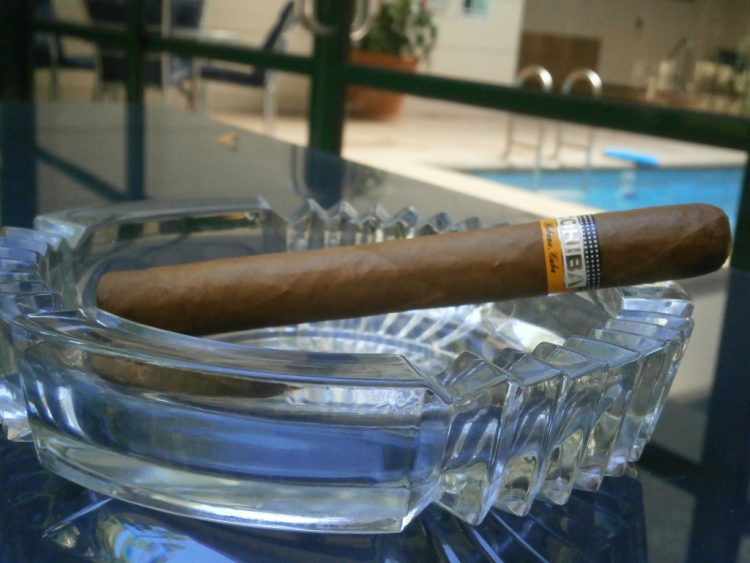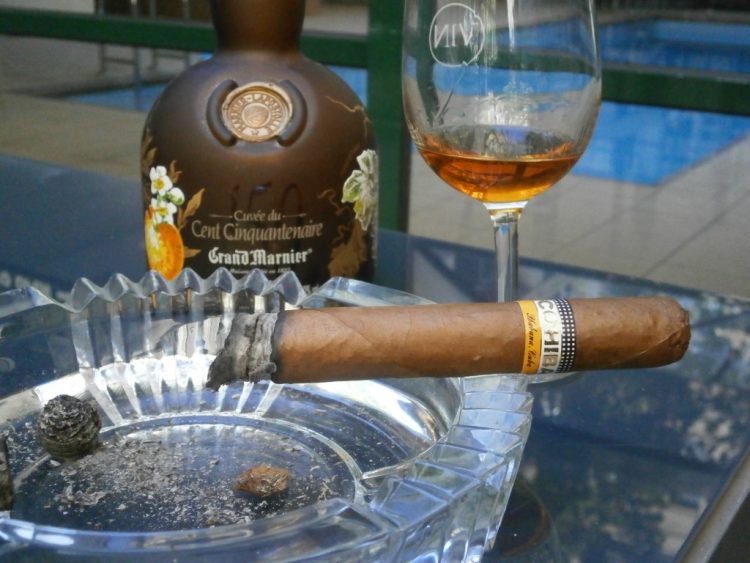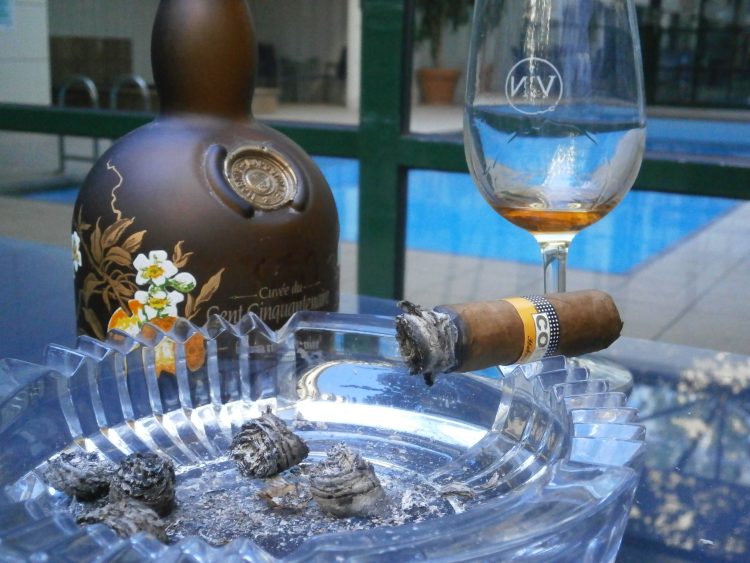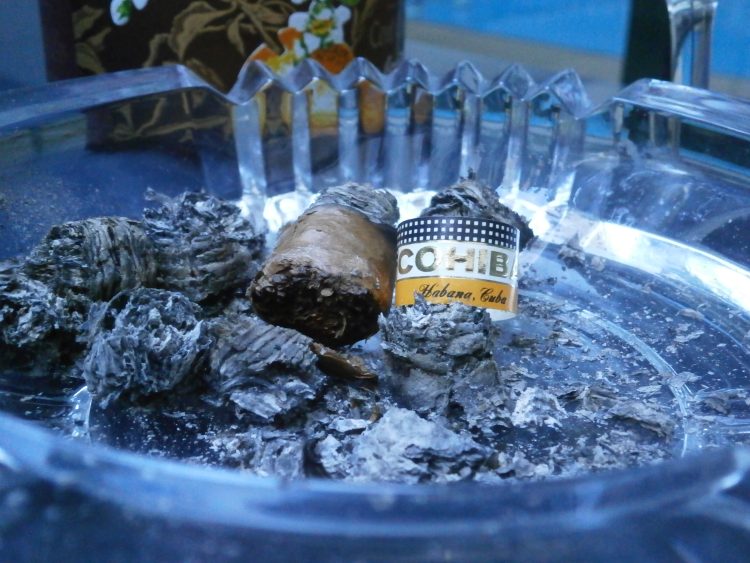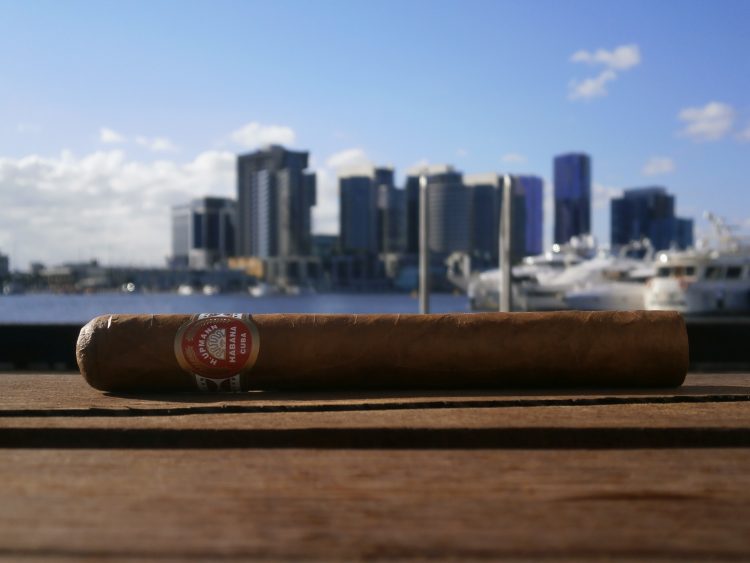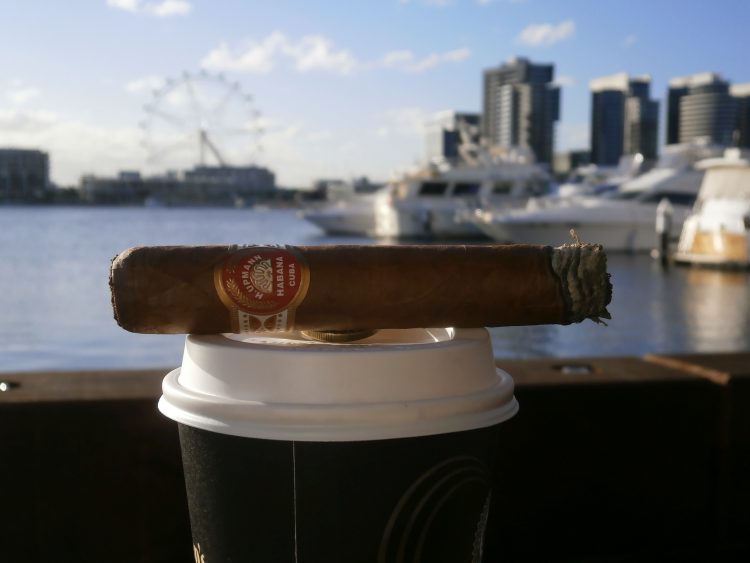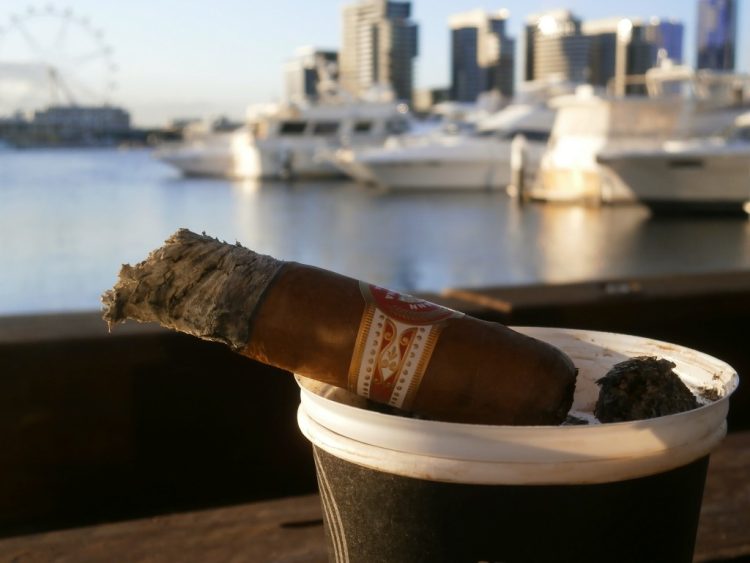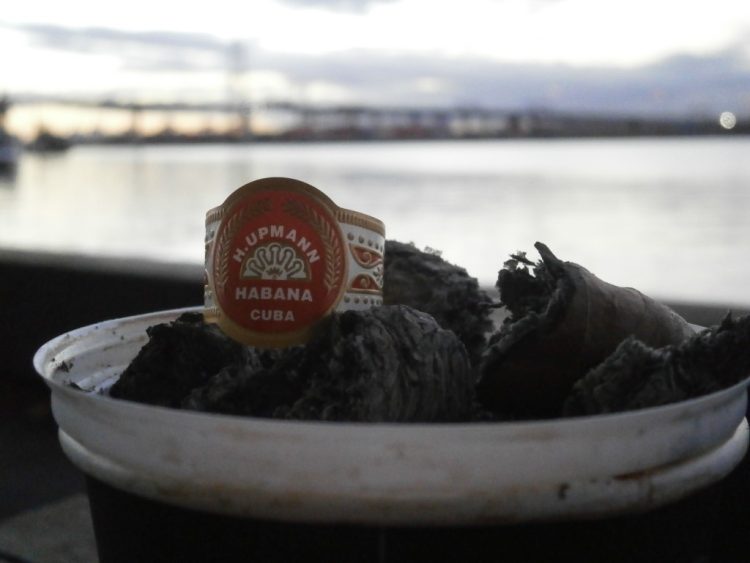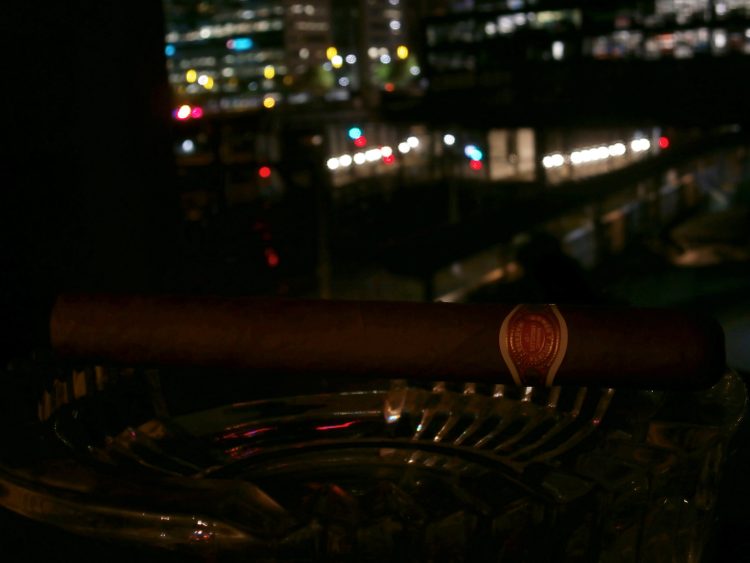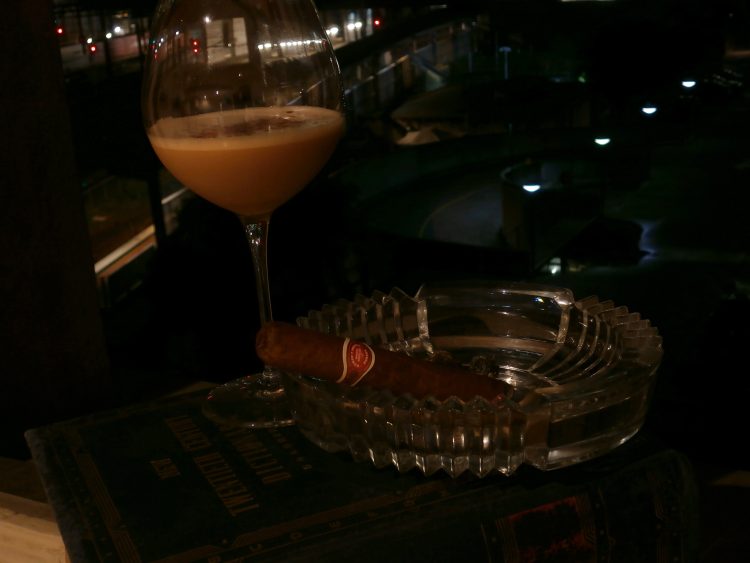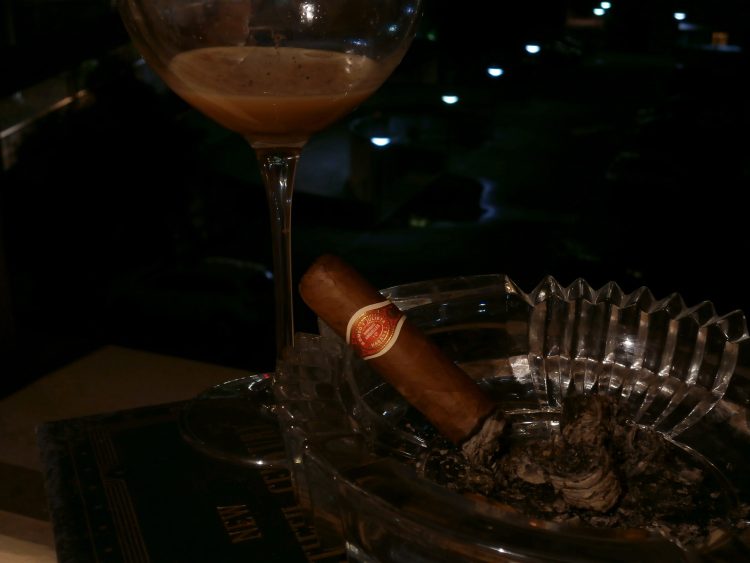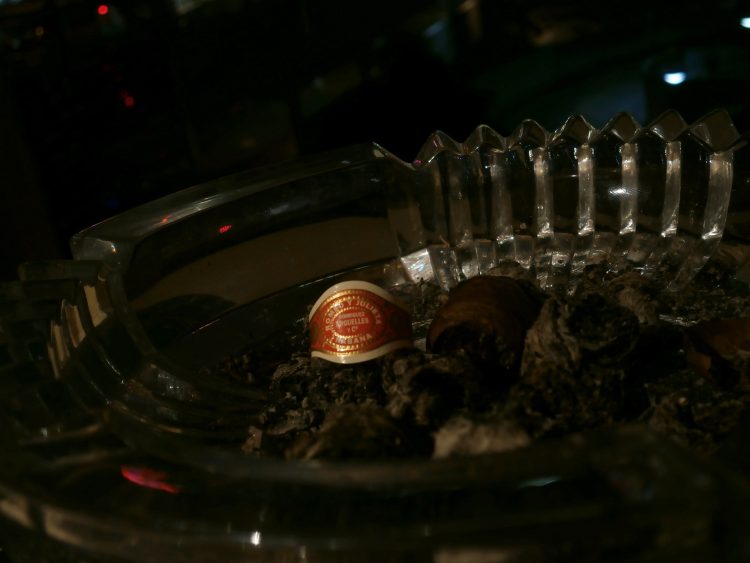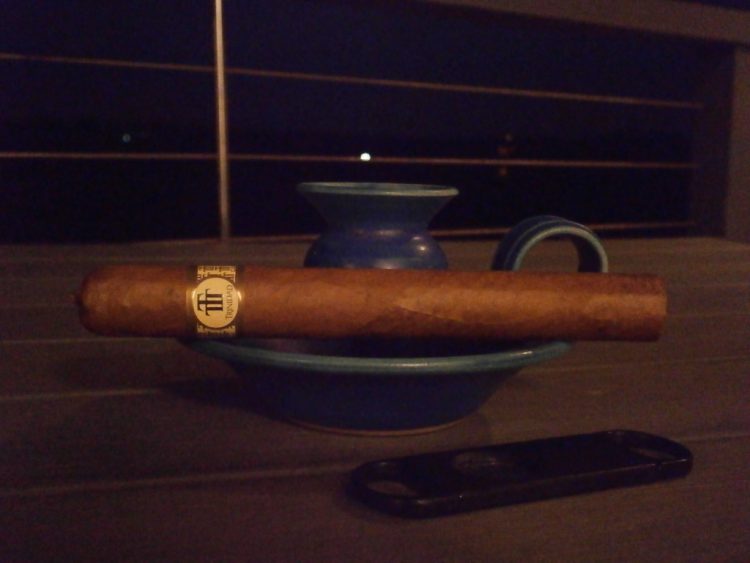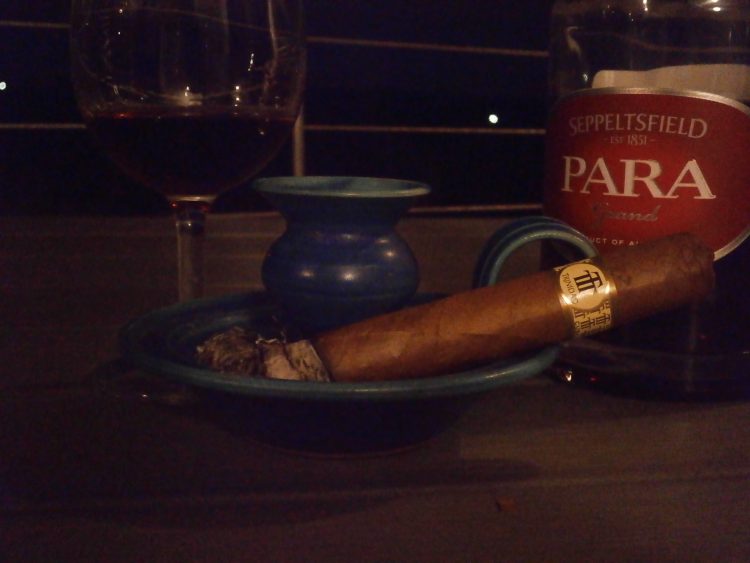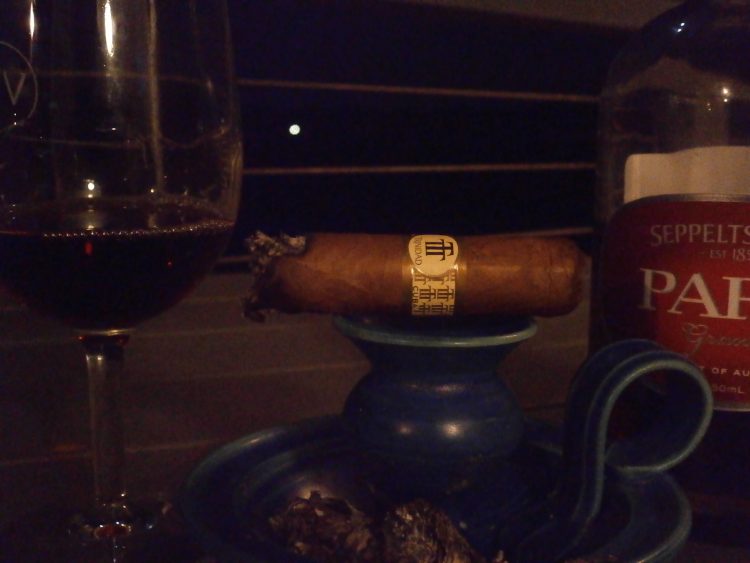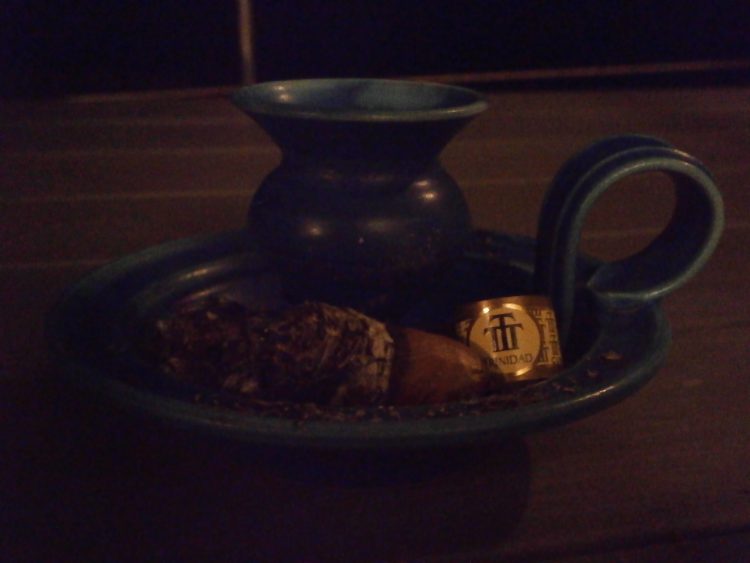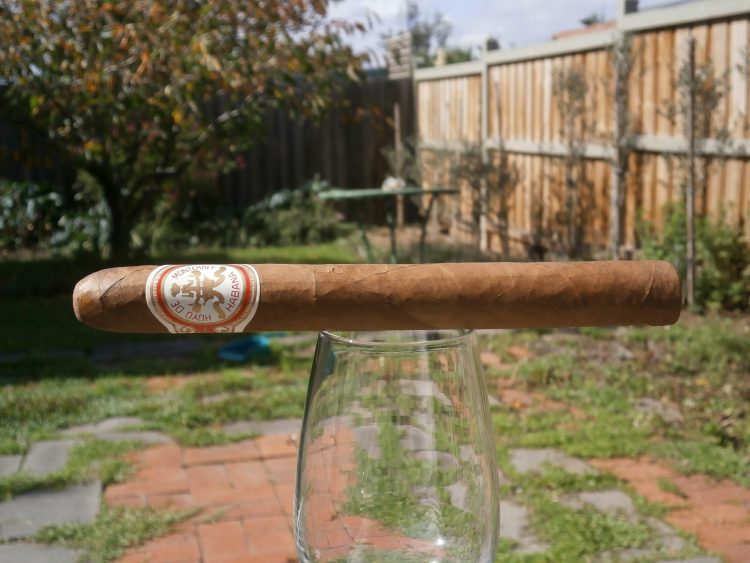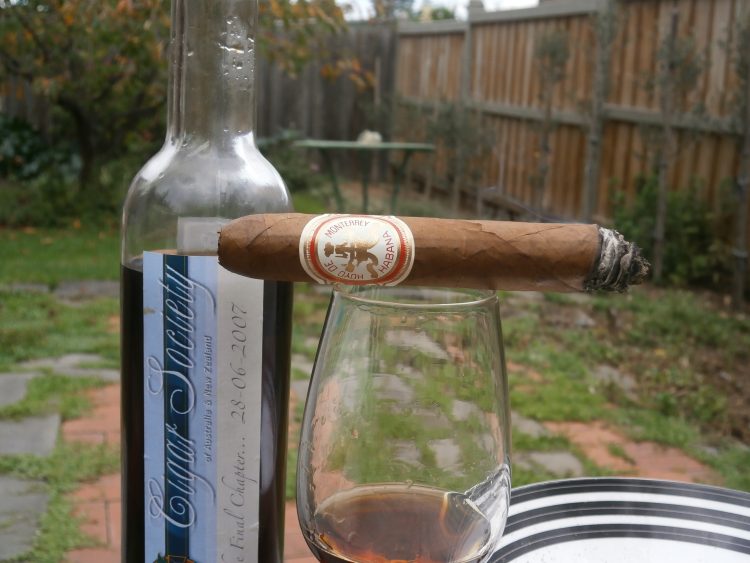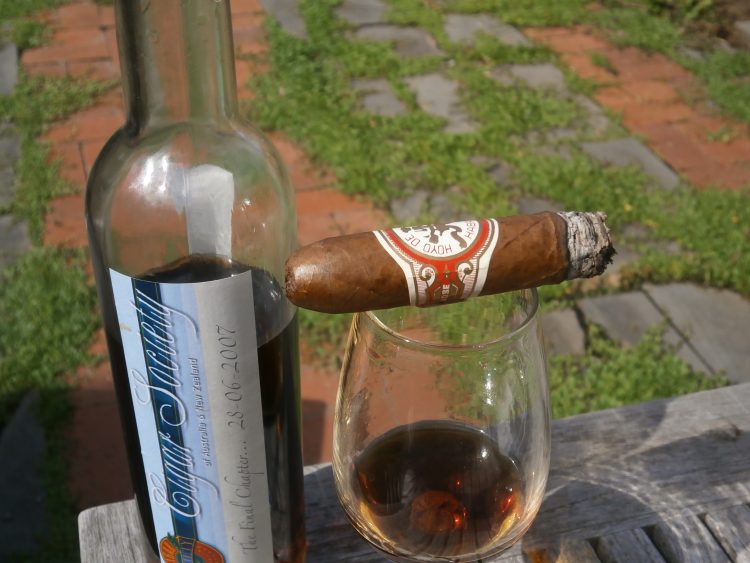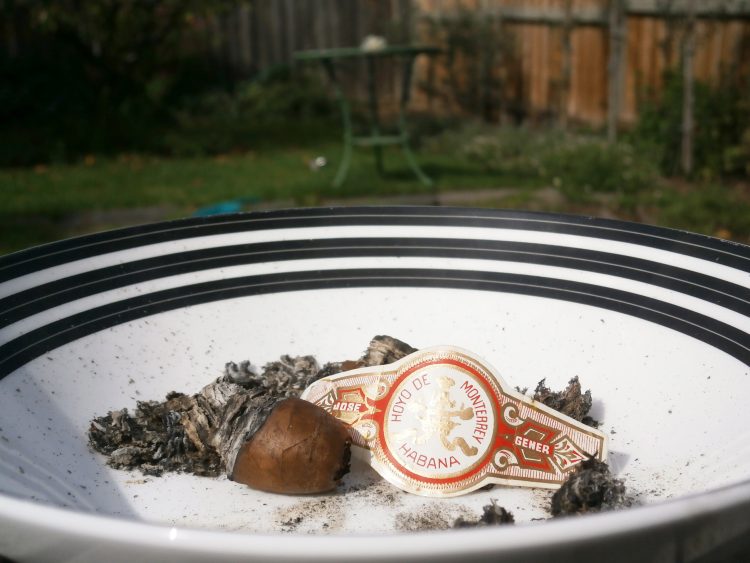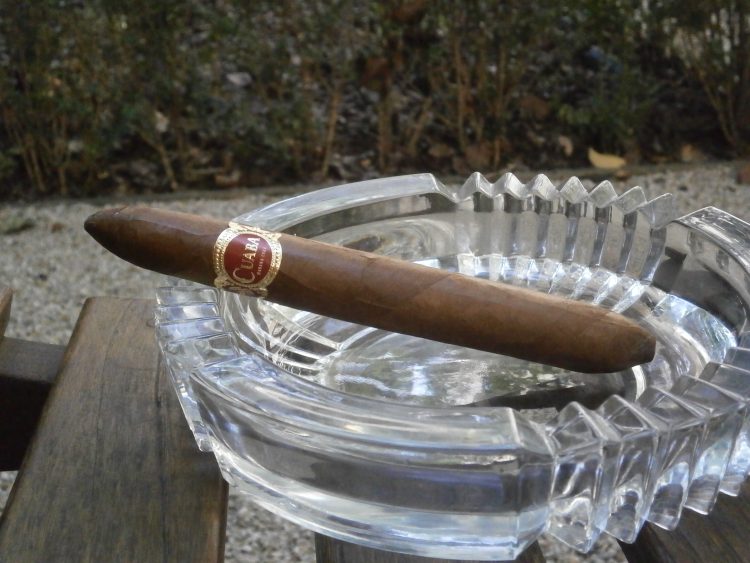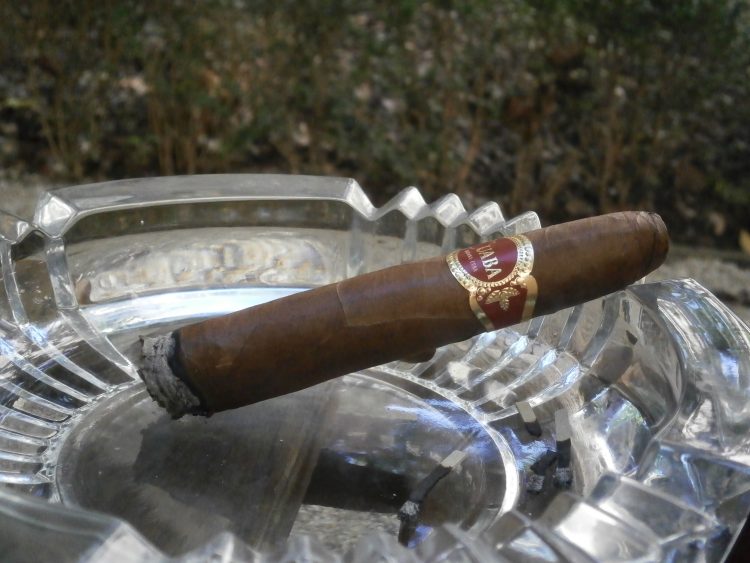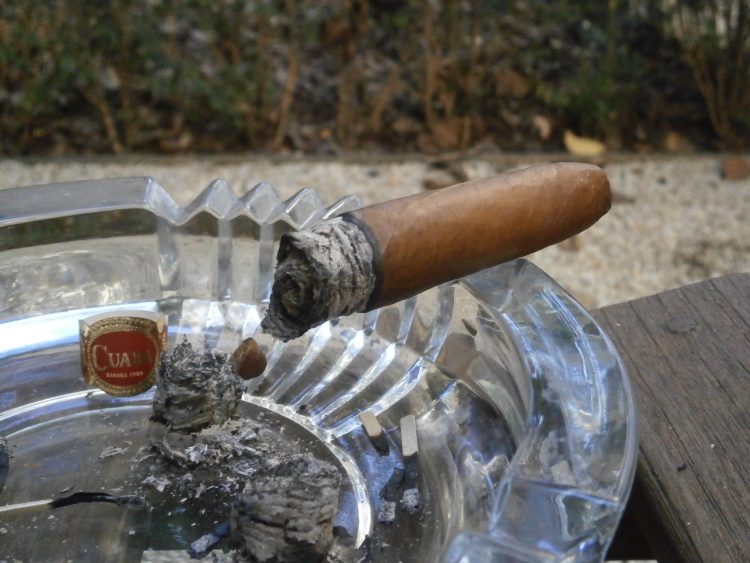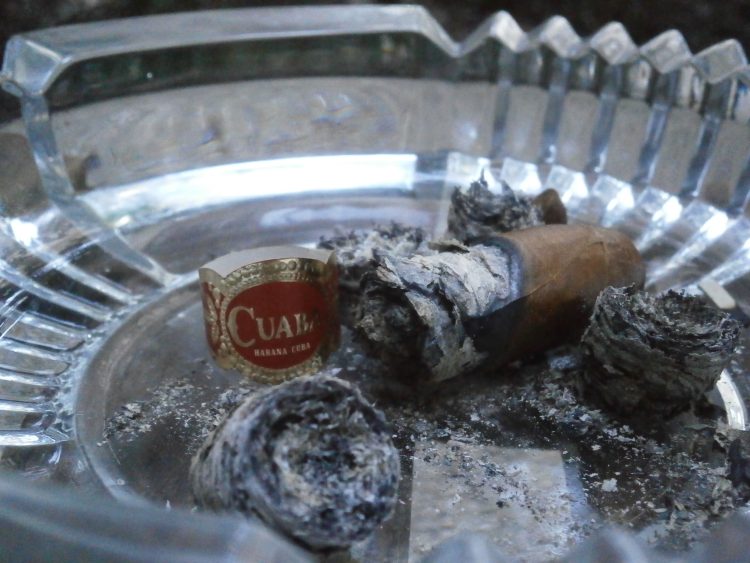I’ve a lot of time for Bolívar, and no cigar more than their biggest seller, the Belicosos Finos – so much so, that with the possible exception of the Monte 4, you’d struggle to find a cigar I’ve been through more of. Today, seated on the grass in a local park on a mild autumn afternoon, I’m smoking 2010’s Bolívar Gran Belicoso, which although a little thicker and a lot longer, is presumably essentially just a Belicosos Finos in a fancy box.

From the outset the Gran Belicoso is medium strength, tending toward full, with a nice toasted tobacco flavour and strong grassy notes. Most of the Colección Habanos begin very light and in a cigar this length this kind of strength up front is bit of a worry, as the build-up of tar throughout will probably make the end very bitter. The ash is very dark, which indicates a lot of unburned oil left in the smoke, and is usually a sign of insufficient ageing. I noticed the same dark ash in the San Cristobal; it’s a problem with doing a retrospective of a series like this: the Colección Habanos are, as the name suggests, collector’s cigars, and aren’t really intended to be smoked at only four years of age. Nonetheless, at this stage the Gran Belicoso is very pleasant.
As I’ve described before, I lived for a time in an apartment in Japan that was built for the building manager, the only apartment in a building of hostess clubs and massage parlours. My kitchen wall housed the control panels for the elevator, the water tanks, and the fire control board, and I had full and unrestricted access to the plant and machine rooms. From time to time a drunken Japanese salary man would pick up the emergency phone in the elevator and it would ring in my kitchen, where I would berate them in English. Once or twice I went downstairs and rescued a repeat caller.
The summer in Osaka is disgusting: three unrelenting months of a constant 35ºC and 100% humidity, with no relief at night. Around midnight one night I was sitting in my stifling apartment with more than one cocktail inside of me when I decided that it was time to act. I headed to Don Quijote, a department store not 100m from my house that was open all night, or as near as makes no difference, and sold absolutely everything, from food to clothes to construction materials. I purchased myself a 4m x 3m tarp, a bag of cable ties, and a garden hose: all the materials required for a rooftop swimming pool.
I laid the pool out on my roof, cable tying the tarp to the rails in such a way that, when filled with water, the sides would be firm from the tension. The end result was about nine feet by five, and eighteen inches deep. As it filled from the tap that protruded from the wall for no obvious reason I went downstairs and searched through my contacts for a structural engineer that might still be up, finding Woody, and old school chum and architect.
“Woody” I asked “would you think there’d be any issues with putting a few ton of water on the roof of a concrete Japanese apartment building… y’know, structurally?”
“Yes” came the answer “almost definitely.”

Midway through the cigar is full bodied, a really good toasted tobacco over the tang of fresh cut grass with a rich creamy back and a lot of coffee. It’s hard to call a cigar like this elegant – elegance is a subtlety of flavour, a nuanced delicacy – but this is full and rich and balanced and pleasant; every positive adjective you care to come up with except elegant.
The next morning I was awaked about eleven to the sound of a klaxon in my kitchen, an alarm going off on a panel whose purpose I was unaware of at the time (I later found out that it was the control board for the building’s water system, the alarm indicating a low level in the tank on the roof that maintained the building’s water pressure). I called my landlord and in time a Japanese man in his late sixties and a maintenance worker’s jumpsuit arrived. He spoke a little English, and introduced himself as Takeshi. He inspected the panel and flipped the switch that silenced the alarm, before asking me to take him up to the roof. As we exited through my bedroom door onto the roof proper he paused, having met an unexpected obstacle: a substantial tarp swimming pool, sparkling blue and inviting in the summer sun, lay between him and the ladder to the water tank. He turned to me gravely: “may I enter your pool?” I consented, and watched him as he took off his shoes, rolled up his trousers, and waded through my ridiculous construction.
When he returned Takeshi explained to me in broken English that the tank was empty, but he couldn’t find any reason why, and would have to send for some water specialists. I nodded seriously and showed him out, but as soon as he was gone I rushed back to my roof: Takeshi might not know why the tank was empty, but I sure did, and I only had a few hours to hide the evidence of my crime. I took a knife and cut through the cable ties, the sides of the pool collapsing and spilling two thousand litres of water out onto the roof in a wave that lapped against my bedroom door and washed the dust out of the elevator machine room. A whirlpool formed around the only drain, not moving nearly fast enough for the volume of water, until with a ‘whoosh’ a distant sluice gate opened. I heard feminie screams from the street below, and stuck my head over the side to see what was up: water was pouring out of some emergency runoff into the street, and a passing group of school girls had been soaked. I looked back to the drain. It was really moving now.
A few days later I rebuilt the pool on a slightly smaller scale, filling it this time over a number of nights. I bought a black tarp to use as a cover, which served the dual purpose of keeping the bird shit and other muck out of it, and heating the water during the day, and I rigged up an elaborate siphon filtration/water replacement system to keep it mildly clean. From the pool I had a view into a host club, a type of Japanese bar where women enjoy the company of hosts, men with bleached blonde bouffant hairdos and pointy shoes, who are one part James Dean and three parts Liza Minnelli, and laugh at their jokes and tell them they’re beautiful for as long as they keep the champagne flowing. Night after night I would sit in my pool relaxing with a cigar at the end of a long day, and watch as these tight-trousered lotharios threw up on the balcony between drinks, and occasionally woke up a customer who had passed out in the elevator lobby and returned her to her bar tab. The cigar I was enjoying? Invariably a Bolivar Belicosos Finos.

The end of the Gran Belicoso is much lighter than expected, with almost no tar. Beneath the heavy, toasted tobacco there is a distinct sweet aniseed, and a strongly herbal aftertaste. This is a no nonsense cigar, perhaps not as elegant as some, but excellent nonetheless. These cigars might be a little on the strong side for a novice smoker (I find even my veteran head to be spinning a little after two and a half hours of smoking time), but its robust flavours are very accessible and easy to appreciate. It fails to achieve the complexity of truly top end cigars, but is very enjoyable nonetheless, and sits at the top of the middle of the Colección Habanos.

Bolívar Gran Belicoso Colección Habanos 2010 on the Cuban Cigar Website
